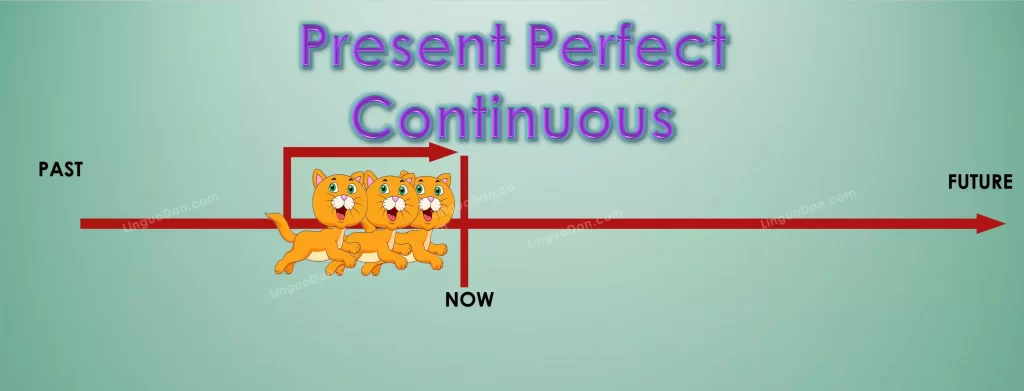Present Perfect Continuous Grammar Test: Check Your Knowledge!

Present Perfect Continuous in English
The Present Perfect Continuous is one of the tenses in the English language. Using this form, we indicate the duration of an action that began in the past and continues until the moment of conversation or until a certain moment in the future. This form emphasizes both the course of the action and its connection with the content of the conversation.
The Present Perfect Continuous is formed with the auxiliary verbs “have” or “has,” followed by “been,” followed by an “-ing” verb (eg, “working,” “eating,” “studying”). This form allows you to express the duration, intensity and connection of the action with other events or the moment of speaking.
The Present Perfect Continuous allows us to talk about actions that started in the past, continue for a certain time, and have an important context for our conversation. This tense form is useful for expressing the duration, results, and relevance of events in our speech.
Using the Present Perfect Continuous
The Present Perfect Continuous is a tense that emphasizes the duration of an action, its completion, and its connection to the moment of speaking. This form is used in various situations to express different aspects of events. Here are some of them:
Duration of an action: The Present Perfect Continuous indicates the duration of an action that started in the past and continues up to the moment of speaking. This helps highlight how long the action has been going on.
Example: She has been working on that project for two weeks.
Emphasis on duration before the moment of speaking: This form allows us to emphasize how long an action has been ongoing before the moment of speaking. This is particularly useful when we want to highlight the duration or intensity of the action.
Example: They’ve been playing tennis all afternoon.
Action influencing the moment of speaking: The Present Perfect Continuous can indicate how an action has influenced the situation at the moment of speaking. This helps establish a connection between the action and its result.
Example: It’s been raining, so the roads are wet.
Action that has been ongoing until a specific point in the future: The Present Perfect Continuous can indicate the duration of an action up to a certain point in the future. This helps clarify what action will be relevant up to a specific time.
Example: By the time you arrive, I will have been waiting for an hour.
Expression of recent or just-completed temporary actions: The Present Perfect Continuous can also be used to express temporary actions that have recently been completed or have just happened.
Example: I’m out of breath because I’ve been running.
The Present Perfect Continuous enables us to provide more detailed and accurate descriptions of various aspects of the duration of actions. It finds application in different situations where we want to convey more information about the duration, results, and connection of events.
Forms of the Present Perfect Continuous
Positive Form
- I / We / You / They + have been + Ving (verb in the form “-ing”)
- I have been studying.
- We have been working.
- You have been exercising.
- They have been traveling.
- He / She / It + has been + Ving (verb in the form “-ing”)
- He has been reading.
- She has been cooking.
- It has been raining.
Negative Form
- I / We / You / They + have not (haven’t) + been + Ving (verb in the form “-ing”)
- I haven’t been studying.
- We haven’t been working.
- You haven’t been exercising.
- They haven’t been traveling.
- He / She / It + has not (hasn’t) + been + Ving (verb in the form “-ing”)
- He hasn’t been reading.
- She hasn’t been cooking.
- It hasn’t been raining.
Question Form
- Have + I / We / You / They + been + Ving (verb in the form “-ing”) + …?
- Have I been studying?
- Have we been working?
- Have you been exercising?
- Have they been traveling?
- Has + He / She / It + been + Ving (verb in the form “-ing”) + …?
- Has he been reading?
- Has she been cooking?
- Has it been raining?
These Present Perfect Continuous forms will help you to use and understand this tense correctly in different situations, be it in affirmative, negative or interrogative sentences.
Test on the topic: Present Perfect Continuous
We invite you to take the test on the topic “Present Perfect Continuous” and test your knowledge of this tense. Here are 20 questions to help you hone your skills in using the Present Perfect Continuous in English.